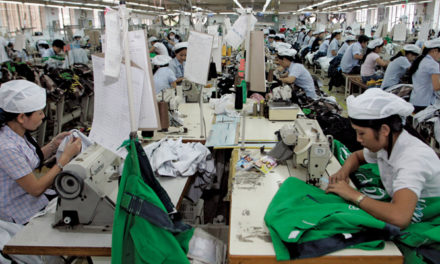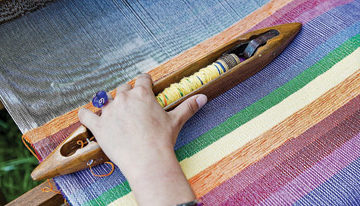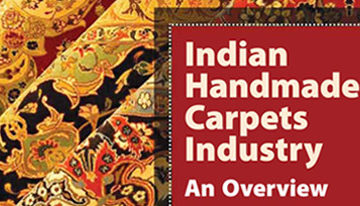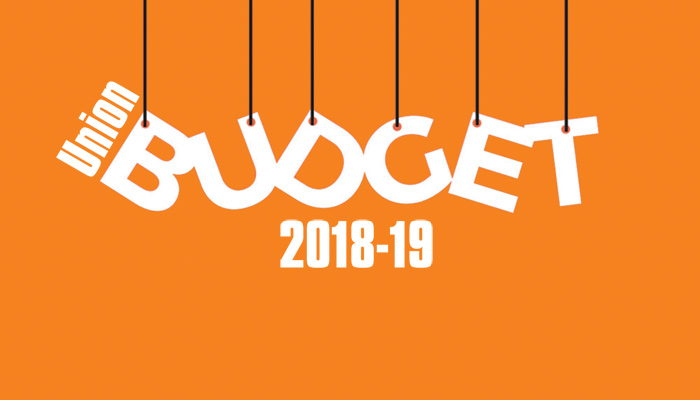 The Indian handloom textile industry has a rich heritage dating back many centuries. Today, this industry plays an important role in many communities, providing employment and preserving cultural heritage. However, with the introduction of mechanized textile manufacturing during the British era, this once-revered industry has faced significant challenges. Some prominent challenges include competition from synthetic fibers, limitations of traditional fibers, lack of investment, large unorganized markets with dependence on middlemen, limited access to domestic and international markets, and labor issues.
The Indian handloom textile industry has a rich heritage dating back many centuries. Today, this industry plays an important role in many communities, providing employment and preserving cultural heritage. However, with the introduction of mechanized textile manufacturing during the British era, this once-revered industry has faced significant challenges. Some prominent challenges include competition from synthetic fibers, limitations of traditional fibers, lack of investment, large unorganized markets with dependence on middlemen, limited access to domestic and international markets, and labor issues.
This largely unorganized industry is experiencing a decline in the weaver community, as the younger generation of weavers is migrating to other occupations due to lower income and unstable work. The handloom industry also heavily relies on materials that are subject to significant price fluctuations. While the Indian government has actively issued schemes and incentives to support the industry, additional efforts are needed. To help preserve this precious art, the Aditya Birla Group – Birla Cellulose, in association with regional partners, has launched a drive to create awareness about natural, sustainable, and durable alternatives by introducing the weaver community to fibers like Viscose, Modal, and Excel, which are relatively price stable.
Given that the cost of silk yarn is often exorbitant and out of reach for the public market, it’s remarkable that Birla Cellulose blended silk fabric manages to preserve the luxurious feel of pure silk while remaining competitively priced. Modal and Excel blended products offer a lustrous shine, brilliant color, and luxuriously soft feel reminiscent of silk. Birla Cellulose’s brand, Liva, nurtures the Indian textile value chain by contributing to the production of more sustainable fibers that also address the breakage issues weavers face with traditional threads.
Furthermore, with their robust supply chain supported by regional partners, Birla Cellulose ensures the timely and consistent delivery of quality yarn that meets all of their customers’ needs, helping to boost the weavers’ production capacity. As part of this initiative, the Liva team also prepares the handloom weaving community for the future by holding seminars and hub meetings that guide these weavers. This initiative will not only help revive the industry but also assist in its expansion, contributing to the realization of the Make in India vision for the handloom sector.
With its versatile R&D center continuously engaged in developing new yarns and fabrics alongside regional partners, Birla Cellulose has helped commercial bulk fabric manufacturers create new bases for printing with the latest in-demand yarns and innovative weaving patterns. To promote the “Vocal for Local” initiative, the Liva team has assisted printers in connecting with grey base manufacturers to obtain quality fabric at the right price. An ongoing project in Odisha involves supporting weavers in developing Ikat using Excel yarn, which will be dyed with natural organic dyes. Beyond pre-production, they also provide support during post-production, including tagging, online and offline market connections, roadshows, and door-to-door promotions, helping businesses increase inquiry leads. To date, Birla Cellulose has trained 5,000 weavers across seven states (Uttar Pradesh, Gujarat, Tamil Nadu, Assam, Meghalaya, Mizoram, and Odisha) and supplies around 15 lakh kilograms of yarn annually.
Birla Cellulose, through its initiative to create awareness of natural, sustainable, and biodegradable yarns, aims to advance its mission of environmental sustainability while supporting the revival of India’s handloom textile industry by encouraging the handloom textile value chain to adopt Birla Cellulose for the greater good!










